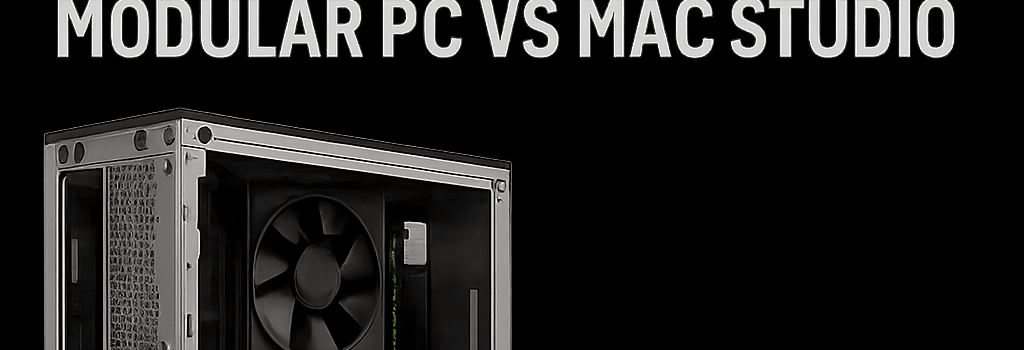Review: Framework Desktop – Modular PC vs Mac Studio

The Framework Desktop blends a compact, Mac Studio–inspired chassis with the repairable, modular ethos of desktop PCs. In this expanded review, we dive deeper into its technical underpinnings, benchmark results, and emerging AI workloads, and compare it with new rivals from Apple, Intel, and AMD.
Framework’s Modular Legacy and Sustainability
Framework built its reputation on field-replaceable laptop motherboards, ports, and batteries. Since 2020, the Framework Laptop 13 line has received six iterations, and users can swap out mainboards or memory modules at home. This design reduces e-waste and extends device lifecycles—an advantage echoed by the Right to Repair movement and new EU electronics regulations effective 2026.
Design and Assembly
The Framework Desktop arrives 80% assembled: a mini-ITX motherboard preinstalled in a 4.5-liter steel chassis, an integrated heatsink, and FlexATX 400 W PSU. DIY Edition buyers need only install a 120 mm fan via standard holes and two M.2 NVMe SSDs (one under a heatsink, one accessible at the rear). The process introduces users to cable routing, fan headers, and BIOS-level port configuration.
- Open the magnetic plastic front panel and snap in two USB-C Expansion Cards (5 Gbps default, configurable to 10 Gbps in BIOS).
- Remove the top panel via captive thumb screws to access fan and RGB headers.
- Install SSDs (PCIe 4.0 ×4 M.2 slots) and optional Wi-Fi 6E/BT 5.2 module.
- Reassemble panels; toolset includes reversible Phillips/Torx screwdriver.
While the exterior uses acrylic side panels and ABS plastic front tiles, the interior employs standardized mounts, headers, and board dimensions. Framework publishes CAD files for 3D-printing custom tiles and handles.
Standards Compliance and Internals
The Desktop’s custom AMD Ryzen AI Max+395 SoC is soldered alongside 64 GB or 128 GB of LPDDR5-6400 RAM, trading socket flexibility for an ultra-low-profile ball-grid array package. The board provides:
- PCIe 4.0 ×4 slot (Gen5 M.2 SSDs queued for BIOS 1.02)
- 2 × USB4/Thunderbolt 4 ports (40 Gbps, DisplayPort 1.4a)
- 2 × USB 3.2 Gen2 Type-A and Gen1 headers
- FlexATX 400 W, 80 Plus Gold certified power supply
Non-proprietary elements include standard fan headers, a PCIe riser, and Swappable Expansion Cards—yet the core CPU, GPU, and memory remain non-upgradable. Upcoming BIOS updates promise enhanced fan curves, AMD EXPO memory profiles, and support for hot-plug NVMe.
Performance, Power, and Acoustics
The Ryzen AI Max+395 features 16 Zen 5 cores at 3.6–5.1 GHz and 40 RDNA 3.5 compute units. Benchmarks reveal:
- HandBrake x265 encode: ~90 W package power, sustained 100 °C thermal plateau (throttling to ~110 W peak).
- Single-thread Cinebench R24: 2,100 points; multi-core ~24,000 points (compared to Ryzen 9 9950X’s 32,000).
- Integrated Radeon 8060S gaming: 75 fps avg in Shadow of the Tomb Raider at 1080p Medium (vs. RX 7600 XT’s 85 fps).
Under light loads, fanless idling keeps SPL under 18 dB. Full load noise peaks at 32 dB—quieter than typical mini-PCs and the Mac Studio’s 45 dB under heavy Xcode compile.
AI & Machine Learning Workloads
With up to 128 GB of unified LPDDR5 memory, the Framework Desktop can load large language models like Llama 2 and Mistral locally. Framework’s AI setup guide details PyTorch and TensorFlow optimizations via ROCm 6.0. While CUDA remains Nvidia’s domain, AMD’s ROCm is rapidly maturing; community benchmarks show fine-tuning a 7 B model at 2 tokens/s on 8060S.
Thermal and Acoustic Management
Compared to SFF water-cooled or vapor-chamber designs, the Framework Desktop uses a large, black anodized aluminum heatsink with five heat pipes over the SoC. Coupled with a 120 mm fan, it achieves a low thermal impedance of 0.12 K/W. BIOS fan-curve updates arriving Q4 2025 will introduce PWM 0–100% control and an optional low-RPM silent mode.
Comparison to Mac Studio and Emerging Rivals
Apple’s M4 Max Mac Studio (16-core CPU, 64-core GPU) serves similar compact workstation use cases. In video encoding, the M4 Max edges out the Ryzen AI Max+395 by ~15% in Final Cut Pro, but the Framework’s open-architecture allows OS-level upgrades and Windows or Linux installations.
Intel’s rumored Core Ultra 300 series with Arc B-series integrated graphics and 3 nm Meteor Lake may close the GPU gap in 2026. AMD’s upcoming Ryzen Embedded 8000 “Strix Point” chips will introduce Zen 5c CPU islands and RDNA 4.0 iGPU cores, promising 50% more RT performance than RDNA 3.5.
Conclusion and Recommendations
The Framework Desktop is unique: a mini-ITX system that honors repairability and open standards—yet trades off traditional upgradability by soldering CPU and RAM. It excels in sustained quiet operation, AI-focused memory capacity, and integrated graphics performance. However, premium ITX builders may balk at its plastic exterior and sealed core.
For users seeking a Mac Studio alternative on Windows or Linux, with easy disassembly and expandable I/O, the Framework Desktop is compelling. Enthusiasts demanding CPU socket swaps or high-end discrete GPUs should still consider self-built towers or upcoming Intel/AMD mini-ITX options.